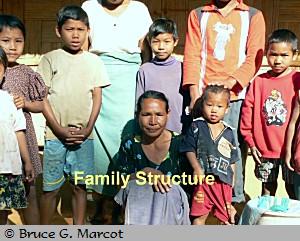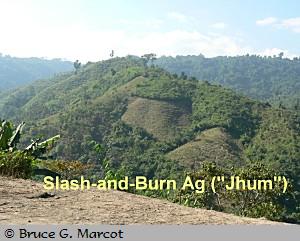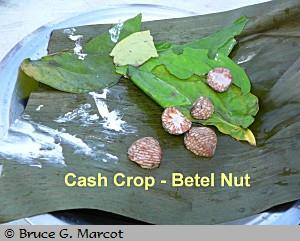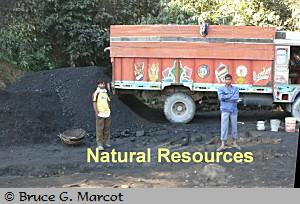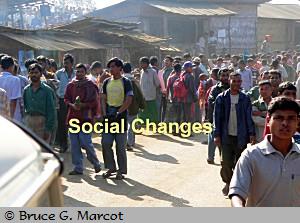|
Explanation: [Note: This week's picture uses a Flash plug-in, which may already be on your system. If you see a photo or cube, click on it to view other faces, then click on any face to zoom in. Otherwise, you may need to install the appropriate plug-in to view the animated image.] The theme of this week's EPOW episode is All One World. When you click on each face of this rotating cube, you will see a different aspect of the social, cultural, economic, and environmental challenges facing the Garo Hills people of western Meghalaya in northeast India. These challenges are all part of the same world view of these people ... which must be considered in concert to help them devise and realize their long-term sustainable use of renewable and non-renewable natural resources, and long-term health of their own culture and society. Let's
explore these multiple facets. Garos are a matriarchical society, where the elder women hold the family wealth and own the goods. This has important ramifications for understanding the resource economy of the culture. For millennia, Garos have used slash-and-burn agriculture (also called shifting agriculture or, locally, jhum). This entails clearing a plot of forest, burning off the slash, and dibbing and planting crops that grow for 1-3 years, before moving on to another plot. If the fallow period between cycles is 10-30 years, as in times past, then the forest, soil, and wildlife can regenerate and continue to occupy the landscape. The problem is that fallow periods in recent times have shrunk to as little as 5, 3, and even 1 or 2 years, which means that soils are becoming depleted, and old forests and their unique wildlife -- including hoolock gibbon, slow loris, Asian elephant, Bengal tigers, and many other species -- are vanishing. Jhum
plots are, in theory, allocated by village headsmen called nokmas ...
although in practice, families generally reuse their traditional plots and
nokmas often just intervene to resolve land disputes. So trying to
reallocate jhum plots by engaging nokmas is only part of the solution;
the families must be addressed directly, including those matriarchs mentioned
above. Here we see a vital cash crop of the Garos: betel nut, which is chewed for its stimulating effects. Betel nut is deeply entrenched into the Garo society and culture. Many forest stands have been cleared for betel nut palm plantations, further reducing forest biodiversity in the region. But the point here is that
one could, and should, not simply assert that betel nut plantations be
eliminated and the land restored to old forest conditions, without understanding the social and
economic dimensions of this, and other, important and traditional crops vital
to the Garo culture. Until recent years, the Garo Hills were highly isolated in an ancient, remote arm of the Himalayas, bounded by the huge Brahmaputra River to the north and west, by the plains of Bangladesh to the south, and by the Simsang River and roadless interior mountains to the east. In recent times, however,
roads into the Garo Hills have been laid or greatly improved, providing access
and economic corridors like never before. Added to this was the recent
discovery of vast amounts of coal in the Garo Hills, leading to extensive
surface mining with concomitant pollution of waterways, choking of roads with
hundreds of trucks, and other adverse effects. The Garo Hills holds some of the most diverse -- and perhaps least studied -- tropical forest ecosystems in India and south Asia. Much of this unique
biodiversity is at risk because of coal mining, extensive jhum
agriculture with short fallow periods, pollution, and conversion of old
forests to other crop fields, roads, and urban environments. And here we see the heart of the social, economic, cultural, and environmental challenges facing the Garo people today: its increasing population. It is not jhum, or betel nut, or family land use, or coal extraction per se that is causing the natural forest biodiversity of the region to be at risk. It is the ever-increasing rates at which such activities are taking place in the Garo Hills, because of the ever-increasing size of the population there. And along with greater road access to other lands, with the expansion of economic corridors and trade nationally and internationally, and with new access to outside influences of movies, advertisements, and goods, has come a growing discontent particularly among young men of the region. In time, as has happened with so many other unique cultures of the world, will the Garo language and the wonderful stories of Garo religions and cultures cease to be taught to the young? Will the Garo culture survive?
|
